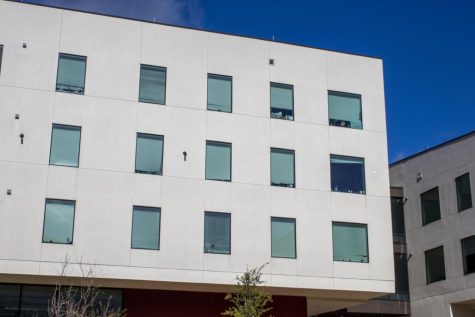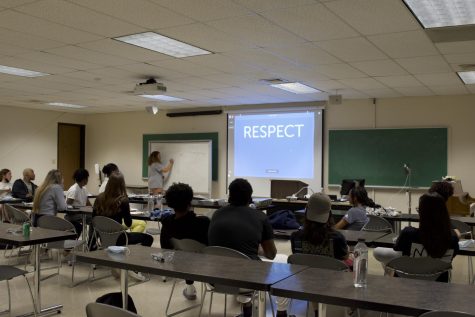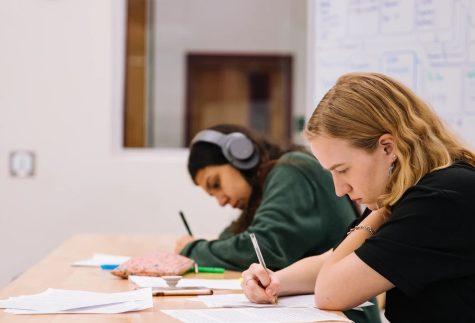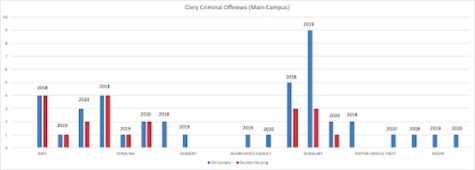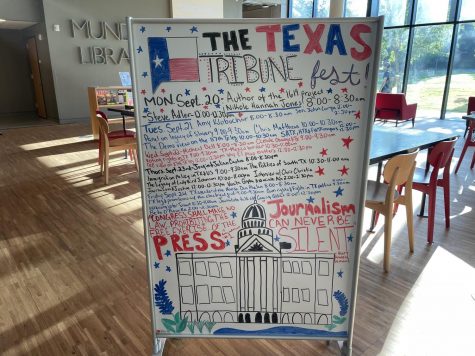German faculty use music
High school and college German teachers from South Texas gathered for a workshop at St. Edward’s University on Saturday looking for new methods for teaching German.
The workshop, held in Mabee Ballroom, was based on using music and other interactive teaching methods to teach the German language.
Kerstin Somerholter assistant professor of European languages, sponsored and organized the workshop through her capacity as president of the South Texas chapter of the American Association of Teachers of German. The association puts on German-related events several times a year.
“The teachers sacrifice their Saturdays and come to these events because they want to leave with methods that make students more likely to learn everything they can,” Somerholter said.
Somerholter said she decided to bring in Mohamed Esa, a McDaniel College Associate Professor from Maryland, to teach the workshop. Somerholter said she made the decision after watching Esa speak at the national AATG conference and because of his well-known teaching abilities, having won several awards.
Esa said he developed his teaching methods because of his own dislike of the traditional textbook-based style, enforcing grammar and reading, that he was taught.
“I knew that music was the way to learn,” he said, “but I knew I had to teach language and not music. I am not a music teacher.”
The key to learning the language through music, Esa said, is keeping the students engaged by using a three-step process. The first step begins with activities for students to learn the vocabulary words and sentences in the song, without hearing it first. In the second step, the students listen to the song and watch a video that connects images with the lyrics. The third step is for students to actively discuss the song and its meaning.
“If you listen to a song like that, you will learn the grammar without realizing it,” Esa said.
The workshop also contained icebreaker games designed to get students speaking German.
Anke Zwietasch, a graduate student at UT who hopes to teach German at the high school or college level, said that she thinks the method will be effective in the classroom.
“It’s good to be reminded of simple strategies that you can actually use,” Zwietasch said.
Per Urlaub, assistant professor of Germanic Studies at the University of Texas at Austin, said he found the workshop to be useful and interesting.
“I think most of this is targeted at high school students, but it is something we can easily modify for college-aged learners,” he said.
Urlaub just began teaching after he received a Ph.D. from Stanford University in 2008. He took over as Vice President of the South Texas chapter of AATG at the workshop on Saturday.
The workshop also serves as a recruiting tool for the university, Somerholter said. High school teachers take university brochures and information back with them to give to their students.
One of the high school teachers was Evelyn Saucier of Westwood High School in Round Rock, Texas. Last year, Saucier received the Outstanding German Educator Award from the national AATG. Saucier said that she employs similar teaching strategies.
“I love teaching with music,” Saucier said. “Students really start to understand the sound patterns of the German language, which is really the most important thing.”
Somerholter left her spot as president of the organization on Saturday so that she can head to Angers, France to teach at the university’s satellite campus in the spring. Somerholter hopes the German program will remain steady and eventually grow at the university. She said other workshops have helped her employ newer methods like blogging and podcasting in her German classes.
However, this semester, there are 44 students enrolled in German language classes compared to 134 in French classes. Somerholter said the reason for the growth of the French language program is the creation of the Angers program.
“I don’t want French to kill the German program,” Somerholter said. “We need to emphasize study abroad for Germany.”
Somerholter said that she believes the influence of German immigrants in Texas and strong high school programs will keep the German program stable. The university has already recently nixed the Italian program due to a lack of interest. Currently, the university currently offers Arabic, Chinese, and Japanese up to intermediate levels. Spanish is the only language that is offered as a major.
Somerholter said she encourages students to learn multiple languages and hopes to tweak the curriculum to make it easier to do so.
“You are going to be so much more marketable if you have language skills,” Somerholter said.







